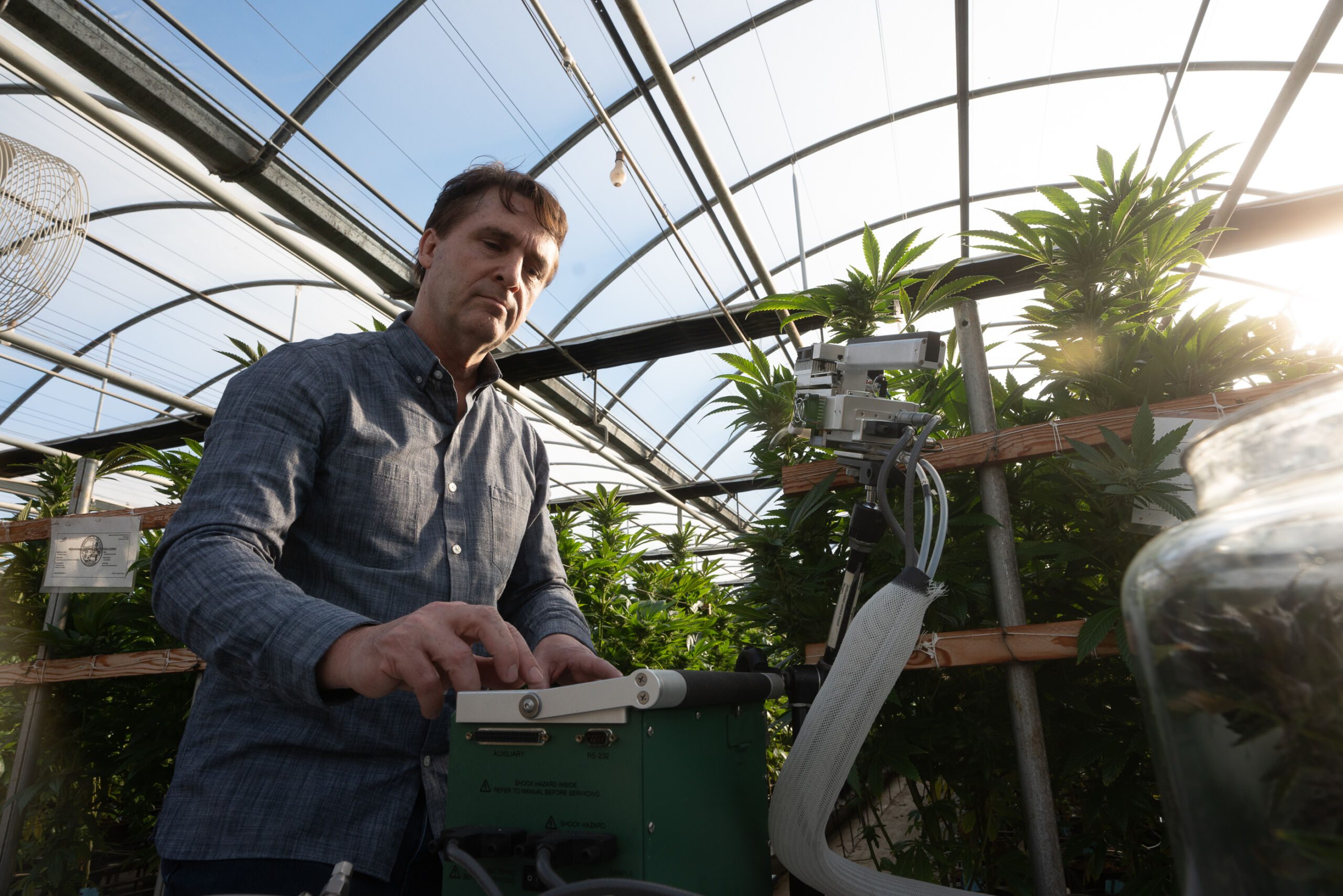In 2019, in conjunction with the Colorado Department of Public Health and Environment’s Air Pollution Control Division (APCD), Byers Scientific’s Chief Scientific Officer and head of its research division, Byers Emissions Analysis (BEA), Dr. William Vizuete, helped lead an air emissions field study focusing on the amounts and implications of biogenic volatile organic compound (BVOC) production in indoor commercial cannabis cultivation facilities. The recently published paper discussing the research study, which collected and evaluated air samples from four (4) different commercial cannabis facilities with plants at various stages of commercial cannabis production, noted a significant variance in the calculated room-specific (e.g., vegetative and flowering vs. drying and trimming) BVOC emission rates.
The authors concluded that the data collected during the study suggest that “the variability in emission rates across cannabis production will create a challenge in establishing a generalized emission factor for all [commercial cannabis] facilities.” It was further noted that “[a]cross the industry, cannabis cultivation conditions and strategies can vary widely impacting the amount and type of [B]VOC emissions.” In order to minimize the uncertainties surrounding commercial cannabis BVOC emissions, the authors recommended consideration of “site-specific information on air exchange rates, plant counts, cannabis strains, biomass, and if hand or mechanical processing is used.”
Understanding a commercial cannabis facility’s particular emissions profile is important in developing an odor control strategy and selecting appropriately engineered and sized odor control equipment. In fact, the authors specifically noted that emission inventories “could provide help in the design of HVAC and the sizing of mitigation technology” for these facilities.
Emission-related concerns go beyond odor and are also relevant to indoor air quality (IAQ). The authors noted that while further research is needed, as volatile organic compounds (VOCs) are known to be a precursor for both ozone (O3) and particulate matter (PM), depending on the VOC concentrations in the commercial cannabis facility, there could be potential worker health concerns.
As a company that supports the commercial cannabis industry with research-backed solutions to odor and IAQ challenges, Byers Scientific has long been a proponent of site-specific facility emissions analysis because as the authors correctly point out, “understanding the potential air quality impacts of cannabis cultivation is complicated by a lack of understanding about the types and magnitude of [B]VOCs emitted from cannabis along with the correlation of light and temperature.” In fact, BEA’s primary purpose is to fill in the research gaps and help provide a better understanding of commercial cannabis emissions and empower commercial cannabis companies to make better informed decisions and implement more effective strategies to address emissions challenges like odor and air quality.
For more information about Byers Scientific and its commercial cannabis emissions research, products and services, please click here.


